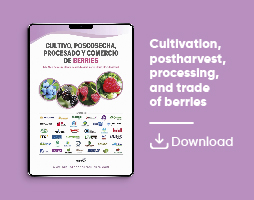

VAM WaterTech
Conditioning
No food and nutrition security without sustainable water management
Stefan Uhlenbrook et al., The Lancet Planetary Health

Abstract
Sustainable and resilient food systems depend on sustainable and resilient water management. Resilience is characterised by overlapping decision spaces and scales and interdependencies among water users and competing sectors. Increasing water scarcity, due to climate change and other environmental and societal changes, makes putting caps on the consumption of water resources indispensable.
Implementation requires an understanding of different domains, actors, and their objectives, and drivers and barriers to transformational change. We suggest a scale-specific approach, in which agricultural water use is embedded in a larger systems approach (including natural and human systems). This approach is the basis for policy coherence and the design of effective incentive schemes to change agricultural water use behaviour and, therefore, optimise the water we eat.
No food and nutrition security without sustainable water management
Over 2 billion people live in places with high water stress; this number will continue to increase in the coming decades due to climate change, population growth, urbanisation, industrial demands, changing diets, and the drive to increase agricultural production. With agriculture being responsible for about 70% of global water withdrawals and more than 80% of withdrawals in agrarian economies, business as usual will not be feasible in the future. A combination of ineffective policies and the absence of coordinated approaches across actors and scales are major barriers to systemic change in agricultural water use. This situation, combined with often insufficient monitoring and water accounting systems exacerbates the global water scarcity challenge and hinders the achievement of Sustainable Development Goal (SDG) target 6.4 to improve water use efficiency across all sectors.
Many call for a great food transformation that includes a global shift to healthy diets produced by a sustainable food system. Otherwise, food and nutrition security for the expected population of almost 10 billion people in 2050 cannot be achieved. Innovations across food systems are critical. Agricultural production needs to increase sustainably and to minimise environmental impacts such as resource depletion (eg, land, soil, water, and phosphorous) and pollution. This is essential for achieving several of the SDGs (beyond target 6.4), the Paris Climate Agreement, and to stop the devastating loss of biodiversity and ecosystem services. Sustainable water management plays a vital role in these processes, and can also facilitate the achievement of other development objectives (eg, climate-resilient growth or job creation).
Water is not only essential in agricultural production itself but also needed along the entire food chain, ie, preproduction (eg, generation of farm inputs like fertiliser, seeds, and energy), postproduction (eg, transport and distribution), food preparation and consumption (eg, washing and cooking) and waste and disposal (eg, logistics and pollution). Therefore, the whole food system is an important driver of water use and increasing system efficiency can be achieved through various actions in different sub-components. For instance, reducing waste also reduces the overall water footprint.9 Also, in contrast to other food production inputs (eg, seeds and agrochemicals), water resources cannot be bought at a market, water is expensive to transport, and water resource availability affects the environment and society.
Furthermore, there are many competing water demands by different sectors (eg, energy, industry, domestic, municipal, environment, and disaster management) within and across river basins. Therefore, proper management of local water resources and recognition of the opportunity costs of poor water management is indispensable for sustainability and for minimising conflict. Unsustainable use (eg, overabstraction of groundwater) might provide food production gains in the short term but be detrimental in the long term and limit opportunities for future generations.
Notably, only 20% of the total cultivated area worldwide is irrigated.10 Food production in Africa, for example, depends predominantly on rain-fed agriculture practised by 500 million smallholders. Only about 6% of the cultivated area in Africa is irrigated. However, irrigation potential using renewable groundwater in Africa could range up to 105·3 × 106 hectares corresponding to 48·6% of cropland, which could considerably increase food security and help manage risks related to increasingly unreliable rainfall due to climate change. Furthermore, sustainable irrigation development could benefit 113–369 million rural people and generate net revenues of US$ 14–22 billion per year in sub-Saharan Africa.
With the number of undernourished, food insecure people on the rise, unfortunately exacerbated by the COVID-19 pandemic, and rapidly degrading land and water resources, there is a clear urgency to act now. Although the world has managed so far with a diffuse and decentralised approach to agricultural water management (often locally unsustainable), the multitude of changing pressures on water use and supply means that this approach will no longer be adequate. Continuing with current unsustainable water management is too costly for people, the economy, and the environment. This is a globally recognised issue (as evidenced for example by preparation of the UN Food Systems Summit) and calls for significant investments, including ways to increase farmers’ productivity and income.18 Many solutions for more sustainable agricultural production have been suggested, but with little change in water management practices at a larger scale. This begs the questions of how transformative change can be achieved, how proposed solutions can be more effective and lead to action on the ground, and how change at scale can be facilitated.
Food production system responses, bottlenecks, and limitations
In response to water scarcity, a wide variety of agricultural water management interventions have been used. The aim is usually to produce more output (eg, biomass, crop yield) for the same or reduced input at the field level. These interventions include biophysical and technical solutions to increase water use efficiency that are based on, for instance, innovations in breeding, biotechnology, irrigation, agronomic practices, and better infrastructure (eg, water storage). Economic instruments (eg, water pricing, and subsidies) and measures to improve water governance (eg, water user associations, policies, and legal framework) are also crucial to improve water use.
Interventions that increase water use efficiency in agricultural production usually have multiple objectives apart from managing water scarcity—for example, to raise farm-level income, alleviate poverty, contribute to economic growth, reduce labour costs, reduce environmental impacts, or support water reallocation from agriculture to other sectors including the environment. Some of these objectives might be complementary whereas others might be at odds and require tradeoffs that are often not well understood or managed. For example, raising farmer incomes might be in conflict and have significant tradeoffs with preserving sustainable water consumption limits at the basin or aquifer scales. Furthermore, related actions are often implemented by a different set of actors and not always in a well coordinated effort.
A review of over 240 interventions to improve water use in agriculture, showed that “higher irrigation efficiency typically contributes to intensification of water scarcity through increased water consumption in the agricultural process”. This situation is a result of farmers using so-called saved water for expanding the irrigated area, increasing the cropping intensity, or growing more water-intensive crops. Perry and colleagues concluded from a global review that water savings from high-technology irrigation are inconclusive, but that these interventions are often associated with an overall increase in water consumption (although the original objective often was the opposite) and relatively constant water productivity. Hence, the intention to save water at the farm or field level for other users or uses often does not come through at larger scales. Determining the impact of local measures at a larger scale and potential opportunities for reallocation to other sectors requires an in-depth understanding of the broader hydrological context and respective water accounts across users and scales.
Grafton and colleagues defined this phenomenon as the irrigation efficiency paradox, ie, that water saved from water use efficiency measures at the local scale (eg, field and irrigation system) does not lead to reduced consumption at larger scale (eg, basin). This is analogous to the well known Jevons paradox in economics, which states that technological progress increases the efficiency with which a resource is used while the rate of consumption of that resource simultaneously rises due to increasing demand.
To manage this so-called rebound effect, effective regulatory instruments with continuous monitoring of related system parameters and enforcement of regulations are necessary. Particularly in the case of collective action problems such as groundwater management. Unfortunately, in practice, regulatory frameworks such as permits for water abstractions have had only limited success in many areas, particularly in lower income countries. The reasons for this situation are manifold. Given the substantial investments by governments, donors, and multilateral development banks to improve water use in agriculture (through agronomic practices, establishment and modernisation of irrigation systems, and etc), it is paramount to understand the reasons behind these observations and learn from experiences to guide policy making and future investments.
Source
Optimising the water we eat—rethinking policy to enhance productive and sustainable use of water in agri-food systems across scales
Stefan Uhlenbrook, Winston Yu, Petra Schmitter & Douglas MarkSmith
The Lancet Planetary Health, Volume 6, Issue 1, January 2022, Pages e59-e65
https://www.sciencedirect.com/science/article/pii/S254251962100264












